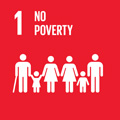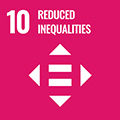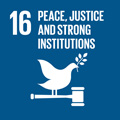- Docente: Filippo Pistocchi
- Credits: 6
- SSD: M-GGR/01
- Language: Italian
- Teaching Mode: Traditional lectures
- Campus: Bologna
- Corso: Second cycle degree programme (LM) in Italian Culture and Language for Foreigners (cod. 0983)
Learning outcomes
The course aims at offering to the students some geographical tools to understand and critically analyse the global changes occurring in several fields, such as: population, environment, territory. It will start with some theoretical and methodological aspects and will then focus on several very actual topics concerning demography and migration, cultural and linguistic diversity and the environment.
Course contents
The course has a doublefold perspective: the acquisition of both a theoretical knowldege on Geography and of practical competences on how geography can be used in didactics.
In particular: Geography as both a tool and a goal of Education and Social Inclusion; Geography as a Territorial Process; Geography related to and in relation with Culture; Geography as a tool to analyse and understand global phenomena.
Readings/Bibliography
NOT ATTENDING STUDENTS
Studying parts a+b+c:
a) General Human Geography (one between the following):
- Fourberg E. H., Murphy A. B., de Blij H. J., Geografia umana. Cultura, società, spazio, Terza Edizione, Zanichelli, Bologna, 2019 [chapt. 1 (NO par. 4) to chapt. 10 + chapt. 11 (NO par. 1-2-3) and chapt. 13 (NO par. 1)]
- Greiner A.L., Dematteis G, Lanza C., Geografia umana,Terza edizione, UTET, Novara, 2019 (NO the following par.: 1.2.3 – 1.2.6 – 1.3.2 – 1.3.3 – 1.3.4 –3.2.4 – 3.3 – 4.8.2 – 6.3.1 – 6.3.2 – 6.3.3 – 6.3.4 – 7.1 – 7.2.3 – 8.1 – 8.2 – 8.3.5 – 8.4 – 9.1 – 9.2 -10.2.2 – 10.3.2 – 10.3.3 – 10.4.3 – 11.3.3 – 11.4 – 11.5)
b) Geographical Tools, Theories and Models (one among the following):
- Minca C., Colombino A., Breve manuale di geografia umana, Trento, CEDAM, 2012 (NO part 4)
- Lévy J. (ed.), Inventare il Mondo. Una geografia della mondializzazione, Mondadori, Milano, 2010 (NO chapt. 1, 2, 7, 8)
- De Vecchis G., Insegnare Geografia. Teoria, metodi e pratiche, Torino, UTET, 2016 (STUDY: par. 1.3; chapt. 2, 3; par. 4.2, 4.3; chapt. 5, 8; par. 9.2, 9.3)
c) Geographical Themes (one among the following):
- Giro M., La globalizzazione difficile. Ridisegnare la convivenza al tempo delle emozioni, Mondadori, Milano, 2017
- Marengo M.,Geografia e letteratura. Piccolo manuale d'uso, Bologna, Pàtron, 2016
- Pagnini M. P., Terranova G., Geopolitica delle rotte migratorie. Tra criminalità e umanesimo in un mondo digitale, Roma, Aracne, 2018
- Rampini F., Oriente e Occidente. Massa e Individuo, Einaudi, Torino, 2020
ATTENDING STUDENTS
Studying parts a+b+c:
a) Issues and themes of contemporary Geography
- Tools and materials provided during the course
b) Teaching geography, literature, and culture (one among the following):
- De Vecchis G., Insegnare Geografia. Teoria, metodi e pratiche, Torino, UTET, 2016 (STUDY: par. 1.3; chapt. 2, 3; par. 4.2, 4.3; chapt. 5, 8; par. 9.2, 9.3)
- Giro M., La globalizzazione difficile. Ridisegnare la convivenza al tempo delle emozioni, Mondadori, Milano, 2017
- Marengo M., Geografia e letteratura. Piccolo manuale d'uso, Bologna, Pàtron, 2016
- Pagnini M. P., Terranova G., Geopolitica delle rotte migratorie. Tra criminalità e umanesimo in un mondo digitale, Roma, Aracne, 2018 (NO chapt. 1; Study also Appendix: Nigeria + 2 study cases)
- Rampini F., Oriente e Occidente. Massa e Individuo, Einaudi, Torino, 2020
c) Geography for learning, knowledge and development (one between the following):
- Writing a didactic project or a research with the support of teacher's instructions
- Another essay from group "b"
Teaching methods
In presence lessons, supported by the use of power point presentations, available for students.
Students will be invited to share a participative attitude during the lessons, by participating to class/group discussions, seminars and other cooperative activities.
Assessment methods
Oral examination of the following goals, knoledges and competences:
main geographical issues and problems; analysis and interpretation of the geographical phenomena and of the relation among geography and culture; knowledge and use of the geographical lexicon; comunication in italian language.
Teaching tools
A Geographic Atlas and/or digital resources are recommended.
Office hours
See the website of Filippo Pistocchi
SDGs




This teaching activity contributes to the achievement of the Sustainable Development Goals of the UN 2030 Agenda.
